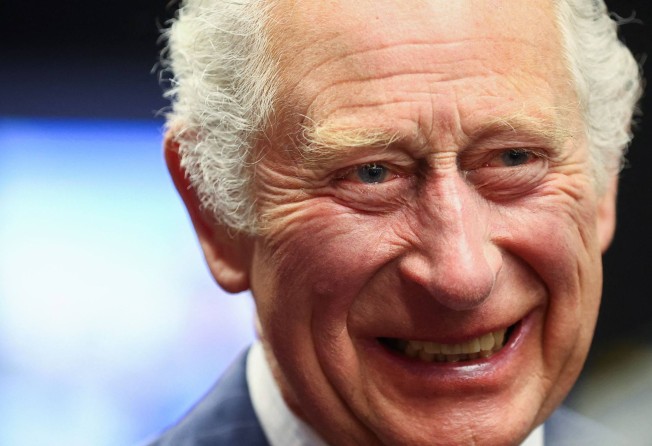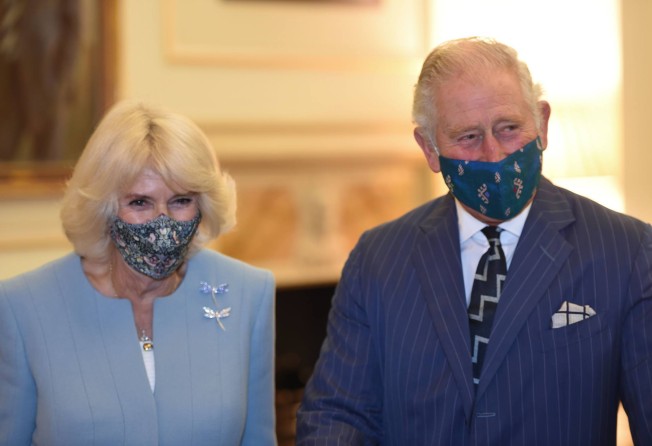
UK’s Prince Charles wants to put masks on cows in ‘fascinating’ new plan
- The masks use state of the art technology to reduce the emissions of toxic greenhouse gases emitted by cows’ mouths and nostrils, not from powerful flatulence
- The were designed by Zelp, a start-up that won a competition that is part of the Prince of Wales’ Sustainable Markets initiative

Britain’s Prince Charles, a lifelong environmentalist, has thrown his full support behind an initiative to put masks on cows.
Designed by Zelp, a start-up founded by Francisco Norris, this mask uses state of the art technology to reduce the emissions of toxic greenhouse gases. First, it catches the methane burped out by dairy and beef cows, before converting that gas into carbon dioxide and water.
Contrary to popular belief, around 95 per cent of the methane emitted by a cow comes from its mouth and nostrils, not from powerful flatulence. And it’s this methane that contributes to climate change, Zelp found.
The mask rests on the animal’s head and captures all methane emitted during an exhale. The methane then moves through a micro-sized catalytic converter, where it is converted into water vapour and carbon dioxide. Zelp claims its tests have already shown a 53 per cent reduction in methane emissions and it’s planning to raise that number to 60 per cent.

In the inaugural Terra Carta Design Lab competition held at the royal College of Art in London, the invention won one of the four US$96,160 prizes up for grabs.
The contest forms part of the Prince of Wales’ Sustainable Markets initiative and the Prince, alongside a panel of fellow judges, had the final say on the winners. Later that week, at an exhibition showcasing the designs, he called the device “fascinating”.
Speaking to the victorious teams, he said: “I can’t tell you how proud I am to be associated with the royal College of Art, particularly as a result of seeing the remarkable ideas presented by many of them alumni and existing students.
“May I say that it is critical because of the urgency we face in terms of the crisis confronting us in all directions and just how important is what their ideas represent in terms of finding solutions rapidly.
“I can only hope as a result of this and drawing more attention to what you are doing that we will have a better chance of winning this battle in a shorter time. I can only wish you every possible success. Many congratulations, marvellous.”
Carbon dioxide is currently the number one greenhouse gas we emit, with methane coming in as a close second, making up about one-fifth of global emissions. However, despite dissipating much faster than CO2, methane is 80 times more potent at trapping heat in our atmosphere.

With the help of ABP, Britain’s largest meat producer, Zelp is trialling its device on selected British herds with the aim of diminishing their carbon “hoofprint”. Once testing has concluded, the company will begin its commercial roll-out, with the aim of beginning next year.
A spokesman for ABP said: “We have been working with the team at Zelp over several years in supporting development of the technology and are currently piloting the latest units on our demonstration farm in Shropshire.”
“It is part of a number of innovative initiatives under evaluation as part of our research into the future of sustainable British beef production,” he said.
“The Zelp technology is still in development and therefore deployment remains limited to our demonstration farm at this juncture.”